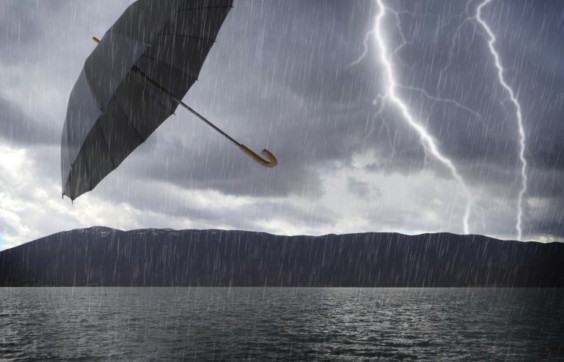Disaster Can Strike Anywhere. Is Your Organization Prepared?

After working at the Red Cross for nearly 4 years, I learned a long time ago that real disasters aren’t always the ones you see coming. As we’ve seen with the massive devastation in Texas caused by Hurricane Harvey, preparedness is key during crisis response. As fundraisers, we can (and must) prepare for the plan we’ll put in place the minute our mission is called upon.
Below, I outline a few steps to create an emergency response plan—no matter how big or small the disaster.
Does your organization need a disaster fundraising plan?
When you think of disaster relief, you probably think about the Red Cross setting up shelters or Doctors Without Borders operating mobile care units. The reality is that disasters can happen anywhere and organizations can be thrown into the relief efforts even when it isn’t part of their mission. A disaster can be as big as a hurricane or as small as a water main break that floods your office and surrounding neighborhood. Either way, the time may come when your organization needs to mobilize and get involved or seek help for its own recovery.
What’s your plan?
There are several components to a disaster fundraising plan. Let’s look at the basics.
- Develop a communications strategy for constituents, the Board of Directors, staff, and the media. There should be a unique plan for each audience.
- Have a policy or understanding with your Accounting Department of how disaster donations will be tracked and acknowledged.
- Discuss and make a plan for how to accept (or turn down) offers of inkind donations. Make sure the front desk knows to whom inquiries should be directed.
- Immediacy is key. Who will handle putting together and sending an online and/or direct mail fundraising appeal to constituents? Ideally, you want to send something within 2-3 days of the disaster striking.
- Every year, update the plan with a list of the top donors you can approach for disaster gifts. For smaller disasters you may not need to do this, but if the impact is in the high 5 figure or more range, you’ll need to solicit your best donors (individuals, corporations and foundations) for major gifts.
- During disasters it is very common for businesses, civic groups and individuals to hold events or fundraisers to benefit local organizations. If you don’t have a tool that allows people to set up DIY events or host their own crowd fundraising campaigns, then the next best thing is to put a form or survey on your website that gathers information of people who want to get involved.
- Assign duties. Who will be in charge of making updates to social media and the website? Who will handle volunteer inquires? How will television and radio interviews be handled?
My first two years at the Red Cross were working in Fort Lauderdale, FL. It was the year four hurricanes hit the state, so I learned a lot very quickly. Here are a few things I learned to always be prepared for:
- If the power goes out in your office, what’s the plan to keep working?
- How will you handle spontaneous volunteers that show up at your front door?
- Disaster stats will need to be updated daily. Make sure key personnel have them available.
- Don’t forget the food; there won’t be time for the team to go out to lunch. Consider making arrangements to have food delivered to the office or sending one person out to buy for everyone.
The key is preparedness; the time for questions is not when disaster strikes.
Once you have a plan in place, don’t keep it a secret. Print and disseminate it to your staff and the board, and require that every supervisor keep a copy in their office. Once a year review the plan, make updates and have a quick meeting to go over it again.
*this post has been updated from its original version
